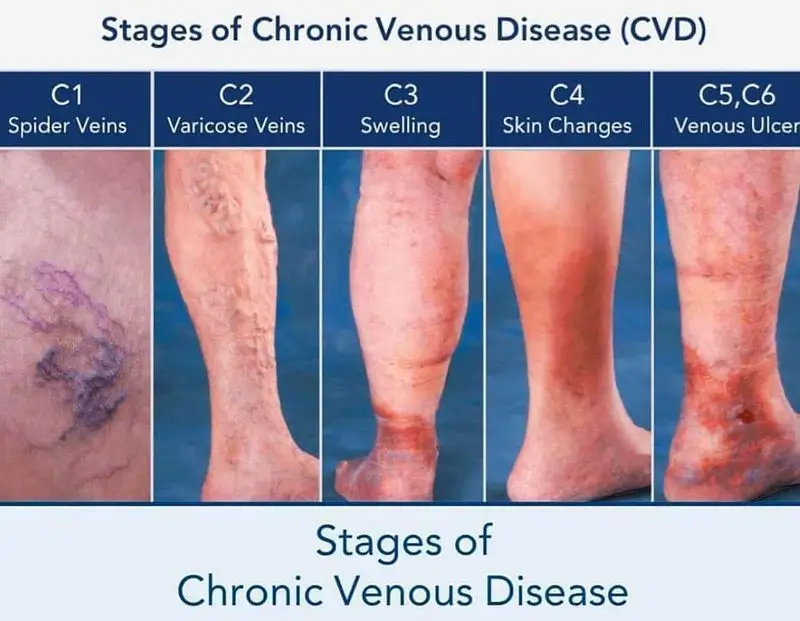A diagnosis of chronic venous insufficiency (CVI) has been rendered upon the former President. The condition was announced following speculation of possible bruising and swelling in the lower leg from some quarters. The White House has clarified that the condition occurs commonly among older adults and that it is not of any immediate danger to health.
At 79, Donald Trump is still active in the 2024 campaign and was recently seen walking with evident swelling on the left leg. As given by his doctors, these symptoms are said to be of venous origin due to chronic venous insufficiency.

Trump diagnosed with chronic venous insufficient
What Is Chronic Venous Insufficiency?
When veins in the legs cannot pump blood efficiently back to the heart because of some abnormality, it is said to be a case of chronic venous insufficiency. Because the blood is impeded from flowing freely towards the heart, it starts pooling in the lower limbs. This, eventually, leads to swelling, skin discolouration, and if not taken care of, painful leg ulcers.
Among people over 60, it is quite common. The risk is increased by age, obesity, prolonged standing, and even a history of blood clots or varicose veins. Though CVI does not cause death, it might cause discomfort, infections, and in rare cases, skin breakdown.
How Was Trump’s CVI Discovered?
The swelling in the legs was first reported earlier this month during one of Trump’s campaign rallies in Michigan, with the public speculating after observing a distinct bulge on his left shin.
The doctors then proceeded with vascular imaging and physical examination. A Doppler ultrasound proved there to be a decrease in blood flow in the lower extremities. The conclusion of venous insufficiency was given shortly thereafter. In any event, his doctors ruled out more serious concerns such as deep vein thrombosis or arterial disease.
According to Trump’s team, the diagnosis will not keep him from working on political issues. In managing his condition, he is said to be using compression therapy and leg elevation.

Trump’s leg swelling first noticed at a Michigan rally, sparking public speculation.
Is This A Sign Of Worsening Health?
The diagnosis, while worrisome to some, is not something that experts call chronic venous insufficiency as beyond treatment; it is not indicative of heart failure or arterial blockage.
The White House stated that Trump’s heart function is normal according to tests done. There were no signs of stroke or cardiovascular decline observed during his latest evaluations.
Medical professionals indicate that venous insufficiency can cause some discomfort; however, lifestyle changes can remedy the problem most of the time. Surgery is indicated should symptoms worsen or ulcerations develop.

Why CVI Happens, Its Symptoms And Treatment Options
CVI happens when the vein valves in the legs become weak or are damaged. This causes blood to pool in the lower legs instead of flowing back to the heart. Typical risk factors include aging, obesity, prolonged sitting or standing, varicose veins, pregnancy, and past deep vein thrombosis.
Symptoms of CVI include ankle swelling, leg pain with itching, skin darkening, and in the final stages, open sores. Many complain of heaviness, while some feel cramping after walking. Trump’s symptoms were reportedly bruising and swelling of a mild nature, aggravated by aspirin and frequent handshakes.
While CVI has no cure, it can be very well managed. Compression stockings, elevation, weight control, and regular exercise can help. Ensuring no long periods of inactivity is also very helpful. Severe conditions may need treatments such as laser therapy and sclerotherapy.
It was also confirmed by Trump’s team that he is currently on conservative treatment and leading an active public life.
How Common Is Venous Insufficiency?
In the United States, over 25 million adults suffer from CVI on an increasing basis. CVI is said to occur more often in females than males, except for those who remain sedentary or are afflicted with chronic illnesses. Worldwide, its prevalence is increasing with age and obesity.
Australia is no exception, with an almost equally high incidence rate. Nearly 15% of adults above 50 years have some level of venous insufficiency, but a great number of them remain undiagnosed so far, health authorities tell us.
Although CVI does exist at a high frequency, awareness about the condition remains low. For even rare incidents like Mr. Trump could hopefully bring some new attention to this often overlooked disorder.
Should Older Adults Be Concerned?
Elderly adults should be aware of the risks involved with CVI. Regular health checks, including those of the vascular system, are imperative. An early diagnosis of venous insufficiency prevents serious complications, such as leg ulcers or cellulitis.
Take the simplest route by exercising, which includes walking daily, avoiding tight clothing, and drinking plenty of water. If the legs begin to swell, hurt, or change in colour, then a more thorough medical checkup should be sought.
Experts Say The Diagnosis Is Routine
Health experts have said that there is no question that Donald Trump is medically unfit merely because of this diagnosis. Vascular specialists continued to call the condition “age-appropriate” and “very manageable” while speaking to various outlets.
“Most people with CVI live normal lives with some basic care,” said Alice Greene, MD, vascular medicine specialist based in Melbourne. “There’s no evidence this limits one’s ability to work or travel.”
Also Read: Greenroom Robotics’ AUKUS approval for exporting autonomous ship software.
Conclusion
Chronic venous insufficiency (CVI) in Trump shines the light on a common but often overlooked vascular problem. Though it does require ongoing medical care, it is hardly the kind of problem that spells a major crisis regarding health.
With treatment and monitoring, Trump and millions of others with venous insufficiency should expect a fairly good quality of life.

